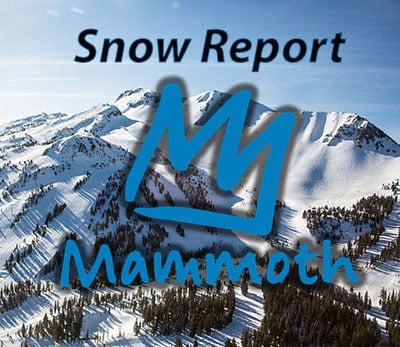By the time you read this article, DWP will have released its proposed groundwater pumping plan for runoff year 2010-2011. The plan is released each year on April 20. The pumping plan this year has much greater significance than any plan for the past four years. This is because pumping this year is no longer constrained by the 2007 Interim Management Plan (IMP). Because the IMP has expired, and because DWP stopped abiding by the Drought Recovery Policy of the Inyo-LA Long Term Water Agreement (LTWA) in 2001, the only management constraint DWP recognizes is the LTWA’s “ON/OFF” protocol. This protocol, unfortunately allows far too much pumping to attain the LTWA’s environmental protection goals.
Inyo County is thus confronted with the fruits of its fear-based decisions of the past. If you’ve read and remembered all my newsletter articles since 2001 you’ll understand what I’m talking about. In case you haven’t, I’ll try to explain below.
Under the LTWA, pumps go on and off according to the ON/OFF protocol — a set of calculations based on measurements of soil moisture and vegetation at 33 monitoring sites. When the LTWA was negotiated ON/OFF was an untested, experimental protocol, and there was concern that it might not be adequate to recover groundwater from enormous drawdowns caused by DWP’s record volumes of pumping during the drought of the late 1980’s. Inyo and DWP, therefore, agreed to an “overlay,” or further constraint on pumping beyond the ON/OFF protocol. This overlay is the Drought Recovery Policy (DRP). It calls, among other things, for “…substantial recovery in soil moisture and water table conditions…” The DRP’s explicit goal is to insure recovery of “soil water within the rooting zone” [italics added] to attain the LTWA’s vegetation protection goals.
From 1991-2000, DWP asserted that its pumping complied with the ON/OFF protocol and the DRP. In 2000, however, DWP hired consultants to “evaluate” the DRP. In their evaluation, DWP consultants de-coupled the DRP’s “substantial recovery” phrase from the “rooting zone” specified in the DRP goal. They decided that “substantial recovery” meant recovery of 80% of the pumping-induced drawdown regardless of rooting zone conditions. In fact, they only used the phrase “rooting zone” twice in their entire lengthy report. DWP used the report as grounds to unilaterally terminate the DRP in 2001 over Inyo’s objections.
In de-coupling “substantial” from “rooting zone” DWP’s consultants de-coupled management from science. “Substantial” is a relative term, while “rooting zone” is based in biology. If soil moisture doesn’t recover in the vegetation rooting zone, the LTWA goal of maintaining groundwater dependent vegetation cannot be met, regardless of how “substantial” is defined.
In its unilateral termination of the DRP, DWP made itself vulnerable to legal challenge on both procedural and substantive grounds. The procedural argument is that because the DRP was established by the Standing Committee, DWP cannot unilaterally terminate it: Only the Standing Committee can terminate it. The substantive argument is that the DRP goal of recovery in the vegetation rooting zone had not been met in 2001 in many wellfields (and still hasn’t in 2010).
Rather than initiate potentially costly dispute resolution and legal proceedings, Inyo agreed — at a Standing Committee meeting in summer 2003 — to send Inyo County Water Dept staff to meet with DWP staff and a facilitator to come up with an “interim management plan.” The idea was that such a plan would constrain pumping in place of the DRP, while Inyo and DWP jointly developed an alternative to ON/OFF. Both Inyo and DWP dislike ON/OFF, though for very different reasons. I vividly recall Inyo County officials threatening litigation over the DRP if the facilitated meetings failed to produce an interim management plan by September 1, 2003.
September 1, 2003 came and went with neither an interim management plan, nor the threatened litigation. County Supervisors were repeatedly told that progress was being made and just a little more time was needed. Finally, in early 2004, Inyo County CEO Renee Mendez became involved and the meetings broke down. The proposed interim management plan produced was so bad even the Inyo County Water Department (which negotiated it) recommended it be rejected, and Inyo Supervisors rejected it in a unanimous vote.
What happened next?
Instead of Inyo Supervisors making good their threat of litigation, the Inyo County Water Department started developing its own replacement for ON/OFF. It made some degree of sense to have developed a potential management solution before initiating DRP litigation. The Water Department publicly discussed its conceptual model for an ON/OFF replacement in 2006. DWP, apparently alarmed that Inyo was about to actually make a serious proposal, then attempted to co-opt Inyo’s effort. It proposed that Inyo and DWP work jointly in an effort not just to replace ON/OFF, but to revise the entire Green Book.
Inyo Supervisors fell for DWP’s proposal hook, line, and sinker. In 2007, Inyo and DWP agreed to an “Interim Management Plan” intended to stabilize groundwater at 2007 levels for three years while DWP and Inyo staffs attempted, with a facilitator, to revise the entire Green Book. The Interim Management Plan “superseded” the DRP and Inyo agreed not to attempt to enforce the DRP while the IMP was in effect. Inyo Supervisors naively thought the Green Book would be revised by 2010 and there would no longer be a need for the DRP.
We pointed out in 2006-2007 the folly of this strategy. There was no reason to think that the same staff who had been unable to accomplish a relatively simple goal of developing an interim management plan with assistance of a facilitator in 2003 would now be able to revise the entire Green Book with assistance of a facilitator in 2007. We made a particular issue of the secretive nature of the proceedings and pointed out that without meaningful public scrutiny DWP would have no incentive to act in good faith and would simply delay. We also argued that the Water Department should continue developing its own ON/OFF replacement because of the high likelihood the joint effort would fail.
It is now 2010. The Interim Management Plan has expired, the joint Green Book Revision process has not produced any Green Book revisions at all, much less a replacement for ON/OFF, and the Inyo County Water Department hasn’t completed its own proposed ON/OFF replacement it described in 2006. Inyo County’s position is thus the same as it was in 2003 and 2006. It couldn’t pull the trigger and challenge DWP’s unilateral DRP termination then, and there’s no indication it can pull the trigger now.
By failing to challenge DWP’s unilateral DRP termination, Inyo has allowed DWP to impose a biologically indefensible reading of the DRP. Because the DRP has the strongest language in the LTWA for attaining the LTWA’s environmental protection goals, DWP has effectively gutted the LTWA and Inyo has acquiesced.
Daniel Pritchett
Discover more from Sierra Wave: Eastern Sierra News - The Community's News
Subscribe to get the latest posts sent to your email.















